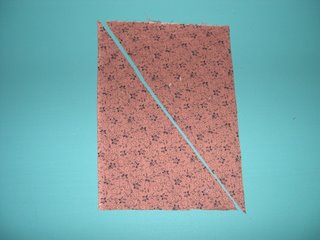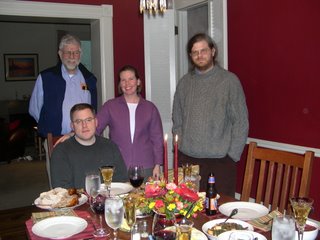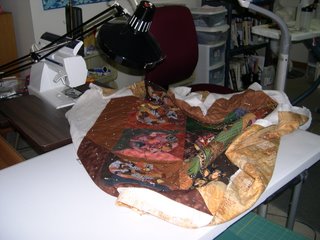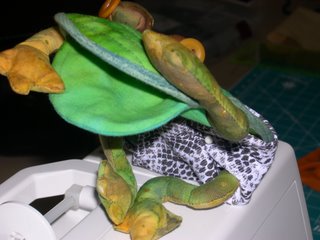
I've finished the machine quilting on my Australian circles and am doing a little handquilting inside the circles to highlight some of the motifs. That is almost finished too. Here's my Christmas gift quilt ready to quilt. I think it's pretty, although I worry a bit that it looks more like a quilt for a seven-year-old "princess" than an elderly lady. I'll just have to hope she likes it.
When I started to cut the backing yesterday, I discovered that I was short of fabric, and so remembered hearing at my retreat a couple of weeks ago about John Flynn's technique of using a bias seam in the backing. This allows you to use less fabric; so with nothing to lose, I tried it, and it worked.
Here's the process: You cut the backing fabric on the bias from corner to corner, making two triangles. (They're actually longer and skinnier than this, of course. A real blogger would have taken photographs of the fabric spread out on the living room floor, but I didn't think of it!)

Then you slide one triangle down enough to give you the width you need for your quilt and sew the bias seam together. And that's it.

John Flynn claims that the bias seam doesn't stretch in the quilt, and in fact the bias actually works better in a long-arm machine. I'll report again if there seem to be problems developing later, but for now, I'm pleased. I used a yard less fabric than I would have needed for a vertical seam, and there is almost no waste, just little triangle-shaped tips. I also don't know how to calculate the amount of fabric you need. I didn't see the show, and the friend who did, didn't remember. Maybe someone else knows.
























